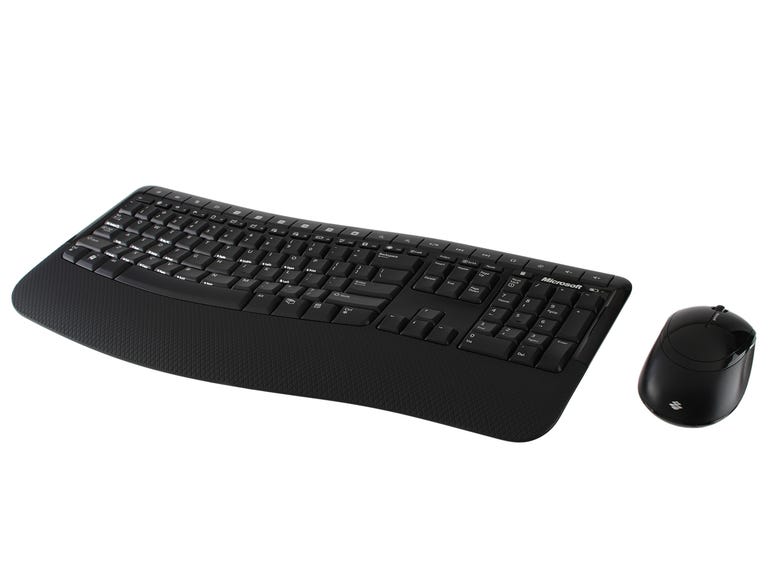 Why You Can Trust CNET
Why You Can Trust CNET Microsoft Wireless Comfort Desktop 5000 Keyboard review: Microsoft Wireless Comfort Desktop 5000 Keyboard
Microsoft Wireless Comfort Desktop 5000 Keyboard
The Microsoft Wireless Comfort Desktop 5000 is an $80 keyboard and mouse combo that offers all of the innovative and customizable features we've come to expect from Microsoft peripherals. The mouse is simple in design but also features Microsoft's BlueTrack technology for use on almost any surface, and the keyboard's body-friendly setup successfully alleviates the pains associated with long-term typing. Our only issue with the keyboard is that the angled design takes some getting used to; but as long as you're willing to accept the learning curve, you'll be more than satisfied with the Microsoft Wireless Comfort Desktop 5000.
The Good
The Bad
The Bottom Line
The layout of the keyboard bundled into the Wireless Comfort Desktop 5000 is similar to the recently reviewed Logitech Wireless Keyboard K350 that splits the keyboard in half and turns both sides up so your wrists are angled in a less stressful position. The big difference between the two, however, is the keys on the Microsoft 5000 keyboard aren't evenly spaced or uniformly sized--since they're forced to conform to the Comfort Curve. The middle rows are affected the most by this bend--the G and H as well as the B and N buttons are significantly wider than the rest, resulting in some mistaken key presses during the initial learning phase. It's not a huge deal, and definitely doesn't require as much time to get used to as the ergonomic split-keyboards; we were typing our average speed in less than two hours into using it.
The short depression distance and the soft (not mushy) touch of the keys both lend themselves to a rather quiet typing experience. Microsoft wasn't joking about comfort, either. The perforated rest pad that sits just below your wrists gently cushions your hands as you type, leaving little pressure on the rest of your arms. The top row of buttons has everything you need to take it with you on the couch and control a living-room PC. Like the Logitech Wireless Keyboard 5000, all of the media control shortcuts live on top of the keyboard to allow for one-touch access to your preferred applications and tasks. The keyboard is powered by two AA batteries included in the package, and there's even a small LCD that glows red when you need to swap them out with new ones.
The mouse that comes with the Wireless Comfort Desktop 5000 is basic, but functional. As stated, it includes BlueTrack, Microsoft's latest achievement in sensor technology that combines the precision of laser with the broad scrolling power of traditional optical mice to achieve smooth tracking on almost any surface, including carpet and other rough surfaces where a normal mouse would likely fail. It worked well on all our test surfaces except glass. If you're adamant on working on a reflective surface, look out for Logitech's Darkfield laser technology, which promises to track on almost everything including nonmirrored glass.
The mouse is also powered by two nonrechargeable AA alkaline batteries, but we take issue with the shape. While we applaud Microsoft for making the mouse comfortable for both right -and left-handed users, the uniform result is too narrow and will leave your pinky finger dangling helplessly over the edge no matter which hand you use. There are five total buttons on the mouse itself: the two main buttons, a smooth scroll dial that doubles as a button as well, and two small buttons on either side of the device. Conveniently, the USB dongle that comes with the package can link up and control both the keyboard and mouse.
For $80, however, we wish Microsoft had incorporated some of the more advanced mousing features, like a toggle that switches the scroll dial between stepped and incremental, as with Logitech's higher-end mice, or even a set of rechargeable batteries with an accompanying charging base station. As it stands, you're really buying the package for the keyboard and not for the mouse, since aside from the BlueTrack, it has the same exactly functionality of Microsoft's Wireless Mobile Mouse 4000, only slightly larger.


